What does it mean to be a sustainable company? This may come as no surprise, but the answer to this question isn’t as straightforward to define.
For instance, the measures required for a commercial construction business to become sustainable will differ from that of an architectural magazine. However, feasible objectives and actions do exist across all industries and sectors. Every company can implement these actionable steps to reduce its carbon footprint and contribute to a more sustainable future.
Although sustainability can be complex to achieve, companies can still pursue common goals to become more environmentally friendly. These goals can include reducing waste, implementing recycling programs, conserving water, and finding new ways to reuse products. Companies can also make a significant impact by utilizing renewable resources such as solar and wind power. Taking this one step further, businesses can prioritize sourcing sustainable materials whenever possible to make their supply chains more eco-friendly.
Arktura and Sustainable Design and Development
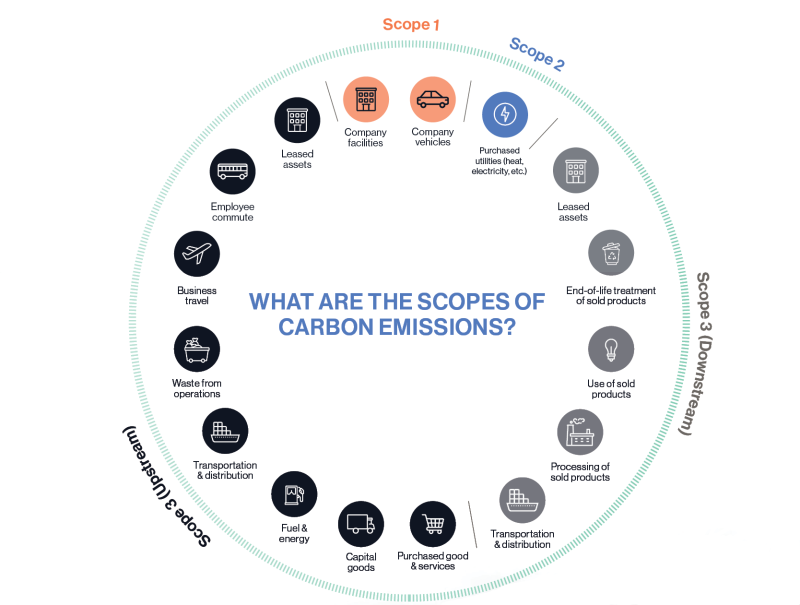
A diagrammatic layout of Scope I, II, and III Carbon-Neutrality by Arktura.
Arktura, the Los Angeles-based manufacturer of architectural systems ranging from interior acoustics and ceiling panels to exterior aluminum facades, is prepared to take their industry to a greener future. Since 2014 Arktura has been a Scope 1 and Scope 2 (more on this later!) carbon-neutral company. In short, carbon-neutrality simply means to offput your own carbon emissions, so your output is offset by other means such as reducing emissions or planting trees. Arktura offsets its manufacturing and office operations as well as company travel and commuting emissions via reforestation in the Amazon Rainforest through the Carbon Fund.
In addition to initiatives that help keep the planet happy and healthy, Arktura looked internally at the materials we were using for the breadth of our standard acoustic systems. We believe true innovation begins with sustainable practices, which is why our acoustic baffles and clouds are made of our proprietary Soft Sound® material. Arktura’s Soft Sound® bridges form and function with this PET felt material, made from 100%-PET plastic, with up to 60% recycled content.
PET plastic, often recycled into polyester felt, is a sustainable choice for noise control. PET plastic makes up many everyday materials like water bottles and takeout containers. This sound dampening material is made available in various finish options, including a premium wood texture, to bring this wonder material to as many projects as possible. Arktura transforms this felt into a versatile acoustic base for backing wall and ceiling panels and acoustic fins and modules that make up our baffle/cloud systems.
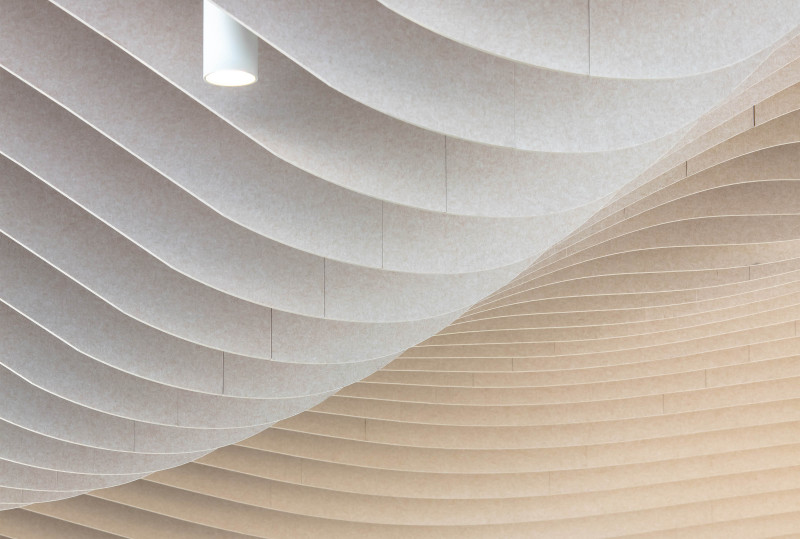
“Phoenix Sky Harbor” Phoenix, AZ, Corgan (Architect), Featuring: Solutions Studio® by Arktura
Arktura is always looking for ways to reduce waste on our journey to become more carbon-neutral. We have created a take back program to reuse shipping fixtures and we utilize sustainable wood practices, including using only FSC Wood, No Added Formaldehyde MDF, and redesigning shipping crates to use less wood.
These steps are just the beginning. Arktura wants to be more than just a sustainable company on paper. We want to take a more holistic approach to being green. Not only is Arktura becoming a more sustainable company over time, but utilizing our systems can help lead to a greener future for your projects. Sourcing Arktura acoustics, panels, and facades is a great way to reduce the ecological footprint of a building project thanks to our recycled content & materiality.
Case Study: Sky Harbor – Phoenix, AZ
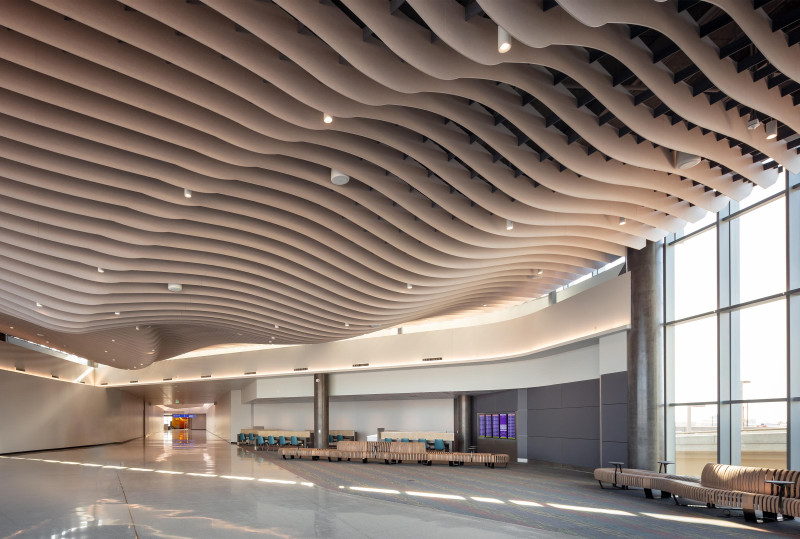
“Phoenix Sky Harbor” Phoenix, AZ, Corgan (Architect), Featuring: Solutions Studio® by Arktura
One such project that called on Arktura’s know-how for a sustainable project in the built environment was Phoenix’s Sky Harbor Airport. We created a series of acoustic dunes in a new, custom form factor for the newly completed eighth concourse of Terminal 4, the busiest terminal in the airport; this project took over three years to complete. The terminal, including Arktura’s custom acoustic modules, was part of a larger-scale project to help increase traveler wellness at one of the nation’s busiest airports. These impressive, large-scale modules are made of Arktura’s recycled Soft Sound material.
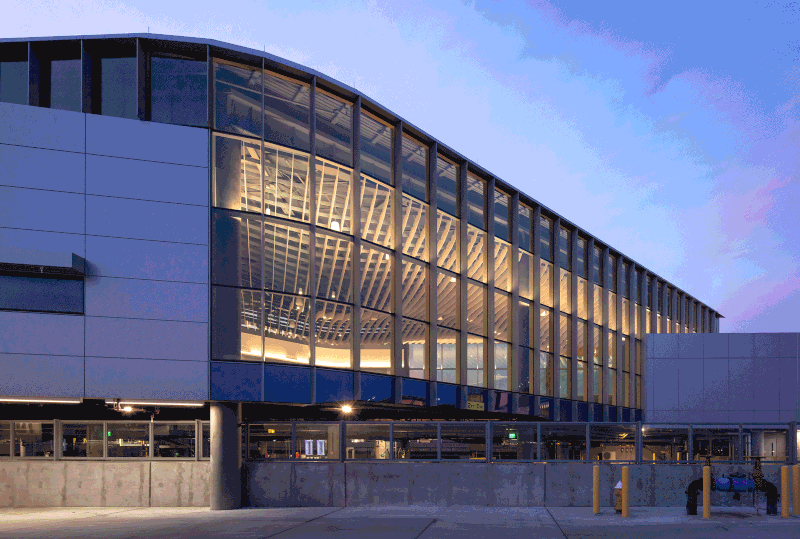
“Phoenix Sky Harbor” Phoenix, AZ, Corgan (Architect), Featuring: Solutions Studio® by Arktura
Based loosely on Arktura’s Atmosphera system of undulating acoustic baffles, this system had to be scaled up to meet the project’s needs. Enormous baffles made of Soft Sound acoustic material were constructed, up to 8-9ft deep in a natural finish that mimicked the surrounding desert. The dune-like quality of these custom fins, representing the sandy landscape of the nearby Imperial Sand Dunes, is even more apparent when looking through the floor-to-ceiling View Smart Glass windows overlooking the surrounding desert. The glass used utilizes AI to automatically adjust the tint in the windows based on the sun’s position.
This process maximizes access to daytime views while blocking glare and heat, leading to more satisfied visitors and less energy used by HVAC and lighting systems. This technology, paired with Arktura’s acoustic solutions, brings a wellness-based approach to this project. Phoenix Sky Harbor is currently pursuing LEED certification on the overall construction.
Certifiably Eco Friendly
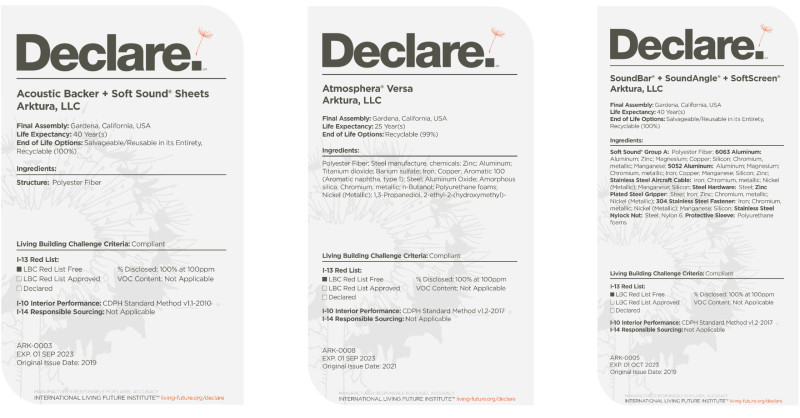
An Example of Declare Labels for Select Arktura Products
Speaking of certifications, there are a handful of commonplace credits and certificates you will hear about that relate to sustainable building practices. Leadership in Energy and Environmental Design (LEED) certification is used worldwide as a standard for sustainability. According to its governing body, the US Green Building Council, “LEED is a third-party green building certification program and the globally recognized standard for the design, construction, and operation of high-performance green buildings and neighborhoods. The rating system approach focuses on efficiency and leadership to deliver the triple bottom line returns of ‘people, planet, and profit.”‘
In addition to LEED, you may also find HPD, or Health Products Declaration, as a “standard for the specification of accurate, reliable, and consistent reporting of product contents and associated health information.” This organization encompasses a full range of members in the built environment, including architects, designers, manufacturers, consultants, and more.
Another type of public reporting is through the International Living Future Institute’s Declare Labels, seen above. These labels act as nutrition labels for construction and building materials. This type of reporting and certification on the sustainability of a company’s materials can be used as a tool for the actual builder or a building materials company.
Earlier, we mentioned Arktura was already Scope I and Scope II energy compliant, with our sights set on Scope III in the coming years. These Scope ratings are set in place by Greenhouse Gas Protocol to classify a company’s efforts to reduce its carbon footprint. According to National Grid, “Essentially, scope 1 and 2 are those emissions owned or controlled by a company, whereas scope 3 emissions are a consequence of the company’s activities but occur from sources not owned or controlled by it.”
The Future of Green Design
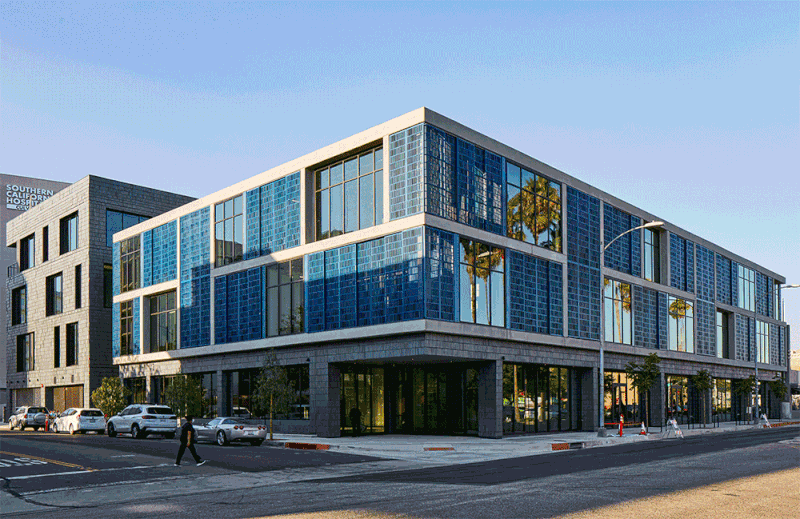
“Brick & Machine” Culver City, CA, Abramson Architects, Sean Costello (Photography). Featuring: Solutions Studio® by Arktura
Sustainable design brings new projects and retrofits into the 21st century and beyond with a renewed focus on wellness and health. In addition to functionality, aesthetics are a crucial component of sustainable design. Commercial buildings can reduce energy consumption by utilizing natural sunlight, incorporating large windows, courtyards, atriums, and skylights. This approach can also contribute to improved well-being and health for building occupants.
Creating specific goals and certifications for environmentally friendly new buildings also increases the volume of sustainable projects. These designations build consumer confidence in a company and make that company appear to be more ecologically conscious, leading to a better brand reputation.
To help the environment, builders can construct eco-friendly buildings, designing the space with natural light, using sustainable materials, and proper insulation. Additionally, using light paint colors and open floor plans can save energy. Many buildings are now adding “green” features like solar panels, electric car charging, and biophilic nature-inspired design to round out their green designs.
As we focus more on sustainable building and green initiatives, we need to understand our negative impact on our planet. The future of commercial construction is about combining sustainability with the benefits it can bring to everyone.
While there is still no direct roadmap to becoming a green, sustainable company, there are easy steps one can take, such as implementing recycling programs, reducing water and waste, and more, to get a head start. Your products and projects can become certifiably sustainable through established governing boards like LEED and HPD. In comparison, more dedicated efforts like solar power, renewable resources, and reducing waste in your supply chain can make your business a compliant carbon-negative or carbon-neutral company.








